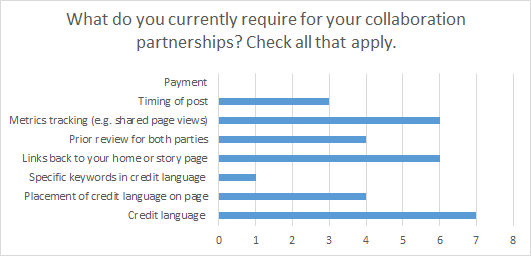What’s in a partnership? (Or a collaboration? Or a syndication deal?)
With the industry’s shrinking resources, news organizations — especially nonprofits, especially those trying to build a brand — are opting for sharing their work with other media more frequently. The Center for Cooperative Media’s database of collaborations, for example, has nearly 200 partnerships recorded, most from the past decade. But what do those entail, and how do they typically work?
The Single Subject News Project, a Shorenstein Center initiative working with eight nonprofit news organizations, dug into the outlets’ perception of and framework for partnerships. There’s a big difference between collaborating in the reporting process or republishing the end result as a syndication (sometimes with payment). Here’s how Caroline Porter explained it, in findings published today.
When surveying our cohort members, we used the term “collaboration” to describe projects between at least two organizations that require, at minimum, some commitment to add value. “Syndication” projects, on the other hand, are those in which organizations offer their content to other news organizations to reprint, as is.
The main aim of partnerships, as defined by our cohort in the survey, is to expand brand awareness…With syndications, a newsroom can reach a larger audience, extending brand awareness and fulfilling their mission of informing the public. At most, with collaborations, partnerships can boost reporting and publishing chops with data, reach, and design help.
Five of the eight in the project’s cohort easily pick collaborations over syndications, even if that involves dealing with “a thousand egos ,” Gordon Witkin, executive editor at the Center for Public Integrity, said. The partnerships also help bump up their potential: “We’re not a daily news site and we have no Kardashians…so we need the eyeballs and the clout that come from a mainstream partner, and our funders want that too.”
The ingredients of a successful partnership include “open, quick, and realistic” communication, shared checklists, and a network of syndication partners to save time on 1:1 outreach. At least six of the eight newsrooms require credit bylines, links to the organization’s site, and shared metrics like page views, and four mandate an advance review by the other partners and prewritten credit language in a particular spot. Payment for content produced in syndications and collaborations is not a must, “though this may be shifting as partnerships become a more codified practice.”

Read the full findings here.
Leave a comment